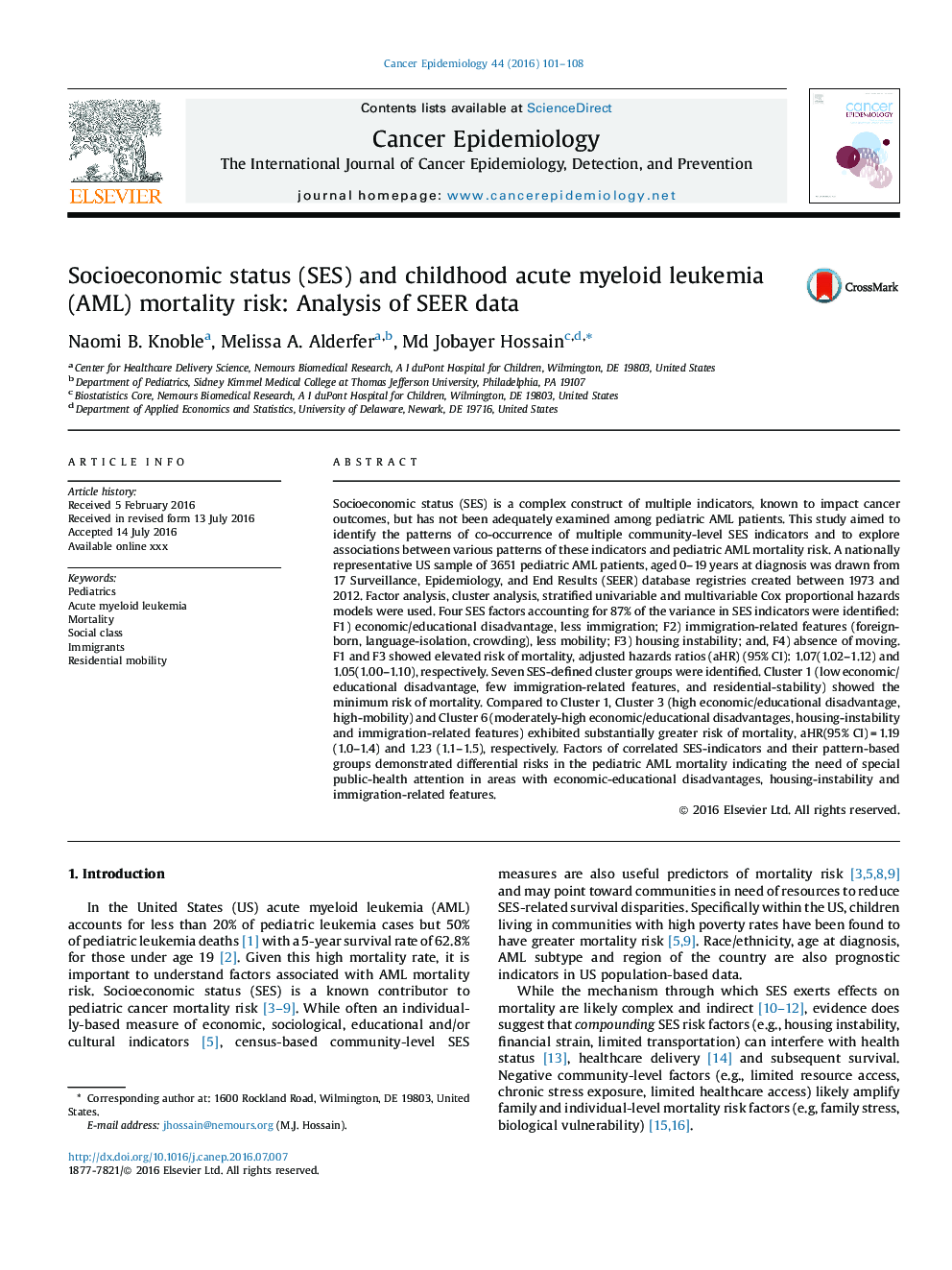| Article ID | Journal | Published Year | Pages | File Type |
|---|---|---|---|---|
| 8433085 | Cancer Epidemiology | 2016 | 8 Pages |
Abstract
Socioeconomic status (SES) is a complex construct of multiple indicators, known to impact cancer outcomes, but has not been adequately examined among pediatric AML patients. This study aimed to identify the patterns of co-occurrence of multiple community-level SES indicators and to explore associations between various patterns of these indicators and pediatric AML mortality risk. A nationally representative US sample of 3651 pediatric AML patients, aged 0-19 years at diagnosis was drawn from 17 Surveillance, Epidemiology, and End Results (SEER) database registries created between 1973 and 2012. Factor analysis, cluster analysis, stratified univariable and multivariable Cox proportional hazards models were used. Four SES factors accounting for 87% of the variance in SES indicators were identified: F1) economic/educational disadvantage, less immigration; F2) immigration-related features (foreign-born, language-isolation, crowding), less mobility; F3) housing instability; and, F4) absence of moving. F1 and F3 showed elevated risk of mortality, adjusted hazards ratios (aHR) (95% CI): 1.07(1.02-1.12) and 1.05(1.00-1.10), respectively. Seven SES-defined cluster groups were identified. Cluster 1 (low economic/educational disadvantage, few immigration-related features, and residential-stability) showed the minimum risk of mortality. Compared to Cluster 1, Cluster 3 (high economic/educational disadvantage, high-mobility) and Cluster 6 (moderately-high economic/educational disadvantages, housing-instability and immigration-related features) exhibited substantially greater risk of mortality, aHR(95% CI)Â =Â 1.19(1.0-1.4) and 1.23 (1.1-1.5), respectively. Factors of correlated SES-indicators and their pattern-based groups demonstrated differential risks in the pediatric AML mortality indicating the need of special public-health attention in areas with economic-educational disadvantages, housing-instability and immigration-related features.
Related Topics
Life Sciences
Biochemistry, Genetics and Molecular Biology
Cancer Research
Authors
Naomi B. Knoble, Melissa A. Alderfer, Md Jobayer Hossain,
